Once you get to Mallorca, you will be surprised by the contrast of landscapes, the atmosphere of the island and the abundance of entertainment. In a little more than one hour, you can cross the island from north to south, while getting a lot of different experiences.
The history of Mallorca is many-sided: Phoenicians, Carthaginians, Greeks, Romans, Vandals, Byzantines, Muslims, Christians., its people: discreet, cautious, calm, patient, tolerant, traditional adherents of their land. Its cities and villages are majestic, coquettish, flourishing and full of history expressed in stone, perfectly fit into the general landscape of the island. The fields are green and well maintained. Its lands are brown, clayey, rocky. Its precipitous mountains offer an endless panorama of the piercing blue sea, its age-old olive trees weave into intricate shapes on the mountain terraces. Its caves are ancient, numerous, underwater, its thousand-year-old paths are unexplored and numerous.
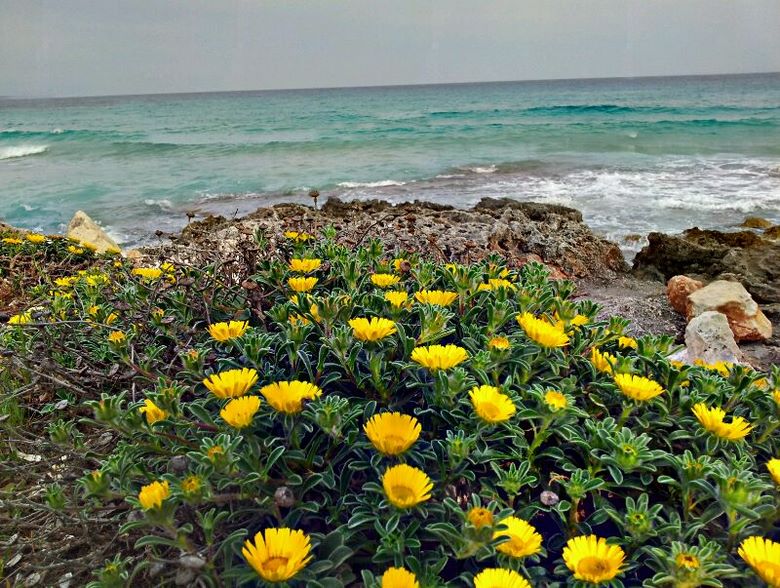
The first tourists came to Mallorca at the end of the 19th century. They were nobles, representatives of the royal courts and European aristocrats, who were looking for the sun, light, sea and purity of nature in the Mallorcan landscape, turned by the local peasant into a magnificent scenario of Mediterranean culture, a wonderful refuge from secular life and state affairs.
The boom in nature tourism in Mallorca at the present time, namely mountain tourism and the Sierra de Tramuntana, occupies a leading position in the list of active entertainment on the island. Medieval paths laid down by the Romans, coastal paths, deep ravines, dense Mediterranean forests dotted with centuries-old oaks, sheer cliffs and the omnipresence of the sea - this is the reality of the island and the ideal place for a relaxing holiday and exciting excursions into the world of Balearic nature.
The Sierra de Tramuntana is a 90 km long mountain range that occupies the south and northeast of the island. In March 2007, it was declared a natural reserve. It is the largest protected area in the Balearic Islands. Its territory is 62.403 hectares. the earth's surface and 1.123 ha. nautical. The area of the Natural Park of Tramuntana partially includes the following municipalities: Alaro, Andratx, Banyalbufar, Bunyola, Kalbia, Campanet, Deia, Escorca, Esporles, Esteienx, Fornalutx, Manacor de la Bal, Palma, Pollensa, Puigpunyent, Santa Maria, Selva, Soyer and Valldemossa . A visit to these settlements will provide an opportunity to get the most complete impression of the nature and culture of the island. 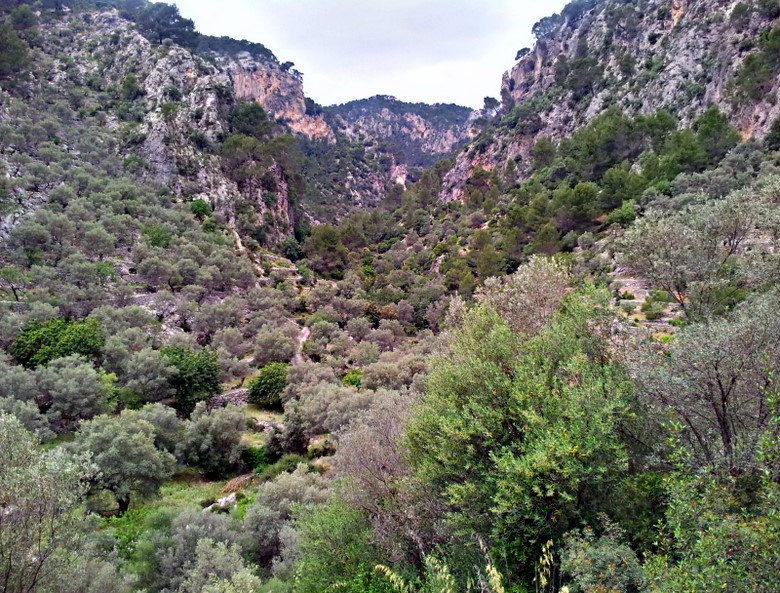
It is noteworthy that the Sierra de Tramuntana has located the oldest human remains known to date in the Balearic Islands. From them, and many others that stretch along the mountain range, we can say that the first human presence in the area dates back to about 5,000 years BC. The first, the so-called cave culture, originated in Mallorca between about 2000 and 1500 BC. In a large part of the territory there are archaeological sites and remains of that era, especially in the caves that served as a refuge for the first settlers. Human remains and fragments of ceramics have been found there, which cover the chronological period from the Bronze Age to the Middle Ages.
Numerous megalithic buildings, the so-called talaiots (1400-1200 BC), were left as a legacy to the Mallorcan landscape.
These are defensive structures in the form of a stone observation tower. The stones that make it up can reach a length of one to two meters.
The inhabitants of the island were very skillful not only in building with stone, but also in throwing it. The Balearic Islands, located in the Mediterranean Sea - the cradle of great civilizations, have always been the subject of attention and observation from their neighbors. The tribes living on the island have always been in a state of combat readiness.
The main prehistoric settlements include:
Son Oms (Palma), Puig de sa Morisca (Calvià), Talaiot de son Miralles (Calviá),
Capocorb Vell (Llucmajor), Santuari de la Pleta de Son Corró (Costitx), Son Fornés
(Montuiri), Necropolis de Son Real (Can Picafort), Ses Paisses (Artá), Santuari d'Allmallutx (Escorca)
And of course, where, if not on the island, you can get the most out of your stay at sea. 262 pearls - 262 beaches with water of all shades. Choose your color and plunge into the crystal clear water without thinking about anything.
Mallorca is located in the western part of the Mediterranean basin. The Balearic archipelago, as it were, fences off the Spanish coast from the rest of the Mediterranean Sea, thus forming a small Catalan-Balearic sea, opening in the north to the turbulent Gulf of Lyon. Such a closed sea has its own microclimate, where there are no significant ebbs and flows. As you know, during this natural phenomenon, the sea level can change, reaching a difference of four meters. But in the Mediterranean Sea, connected to the Atlantic Ocean through the narrow Strait of Gibraltar, the effect of ebb and flow is practically not felt. This also affects the salinity of the water. You will definitely feel the increased salinity of the sea on your skin. It has a density of approximately 40 g/kg, an amount that exceeds the average salinity of the Atlantic waters. This is due to high evaporation and low rainfall. After all, the number of sunny days in Mallorca prevails. 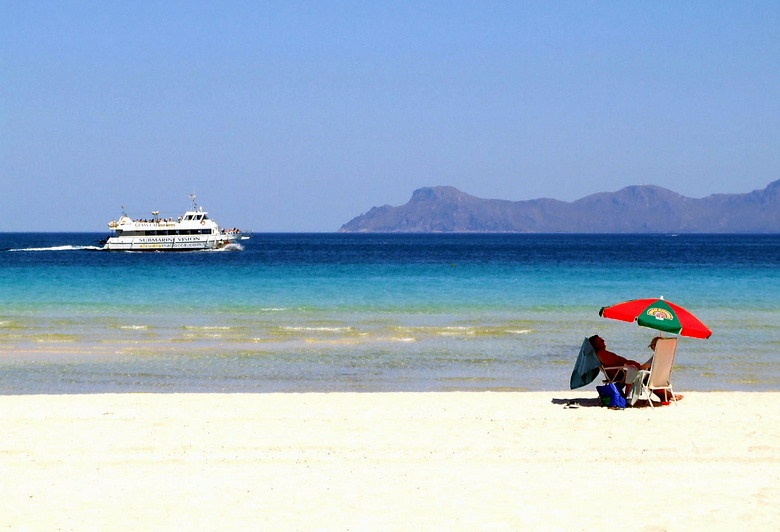
The Mediterranean Sea is very small compared to other seas and oceans around the globe. But its history is no less important for the reason that this is one of the first seas mastered by man. By means of this sea, different cultures met, exchanged, traded, fought. Different civilizations followed the path of evolution, creating a large commercial and political network that enriched various nations and cultures.
Its history was formed millennia earlier, before man began to explore its waters. Now there is hardly any evidence of that former sea, except perhaps only marine fossils. These relics, frozen in stone, testify that the Mare Nostrum, as the Mediterranean Sea is otherwise called, was part of the great primordial oceans. Marine fossils, containing the remains of primitive organisms, and resting on the bottom and in rocky shores, have little in common with the modern sea. They most likely resemble fish and the tropical life of the Indian and Pacific Oceans.
If we imagine Mallorca 4,000 years ago, it can be noted that the climate of the island has not changed much. The average temperature in winter is about 10 degrees and in summer 25. On especially hot days in July and August, it can rise to 35-38 degrees. In the summer period from April to October, when the temperature difference between the sea and the earth's surface reaches about 10-15 degrees, a sea breeze forms, which lowers the air temperature in the daytime. Usually in the morning, when the effect of the sun's rays is not so strong, you can watch a calm, literally mirror-like sea. On the contrary, at noon, at about 11:30 - 12:00, when the temperature rises noticeably, the sea begins to swell. 
.
All beaches on the island, from crowded, equipped with all amenities to secluded bays, have their own zest. Why is the sea water in Mallorca so beautiful and so crystal clear? This is due to the scarcity of nutrients and plankton. Therefore, sunlight, without encountering any obstacles in the form of the smallest particles on its way, is safely reflected from the snow-white grains of sand when it reaches the bottom, which creates the effect of a mirror. For those who like to swim with an underwater mask, any beach is good. Warm, with increased transparency, the sea will reveal to you the bright bottom and precious meadows of the marine Posidonia. 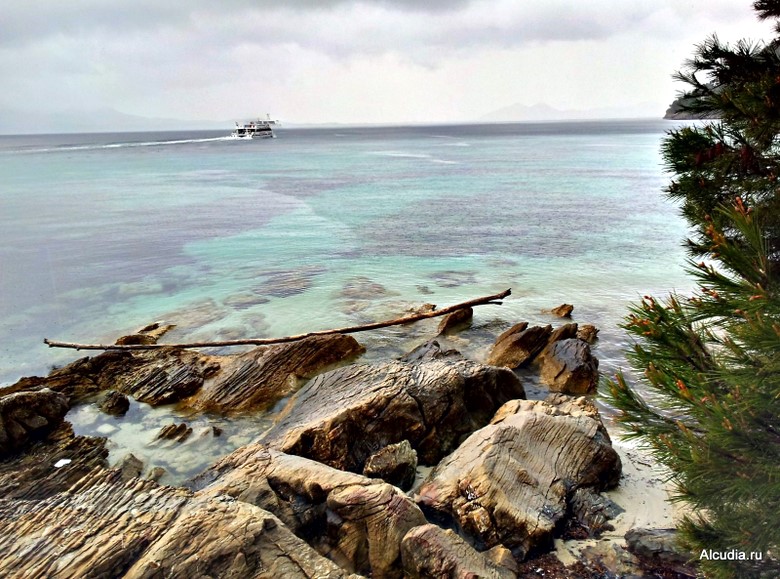
Mallorca is the absolute winner in terms of the number of boat moorings, almost 13,000 located in 28 ports. All of them have a good service, necessary for a long parking or repair. Various maritime companies, as well as yachts of all sizes, motor and sailing choose Mallorca for maintenance and wintering. It is Mallorca that has the largest boat rental offer in the entire Mediterranean. All you have to do is land and board.
The most important sporting event of the summer is the Royal Cup regatta, which takes place annually in the first days of August and gathers crews from Russia, Argentina, the USA and other countries in Mallorca. Most foreign crews rent yachts in the Balearic Islands.
Mallorca is located in the center of the archipelago, only 110 miles from Barcelona, 44 miles from Ibiza and 20 miles from Menorca. Only 10 km. off the east coast of Mallorca Cap de Salines is the Cabrera archipelago, which is a natural reserve. The island of Formentera, almost inseparable from Ibiza, is famous for its heavenly beaches, reminiscent of snow-white tropical beaches. In just an hour you can be on Menorca, the second largest island in the Balearic archipelago. The island is known for its megalithic monuments, which indicate that it was inhabited by humans at the dawn of civilization. Menorca is a less developed island in terms of tourism, with a rural landscape that fills the space between two ports: Mahon and Ciutadella. But this only benefits Menorca, which has been declared a biosphere reserve.
Nine species of marine mammals live in the waters of the Mediterranean Sea. Among them, dolphins and whales are the most common.
It will be interesting to visit the monumental city of Palma de Mallorca, the capital of the Balearic Islands. On the spacious embankment, you will be greeted by the colossal Catholic Cathedral - a magnificent example of Gothic art. The great Spanish master Gaudi and the modern Majorcan sculptor Miguel Barceló, whose work is the decoration of the dome of the hall for Human Rights in the United Nations Palace in Geneva, worked on its restoration. The dome resembles a cave, in which numerous pointed stalactites hang down, perhaps those that resemble the Dragon Cave found in Mallorca. 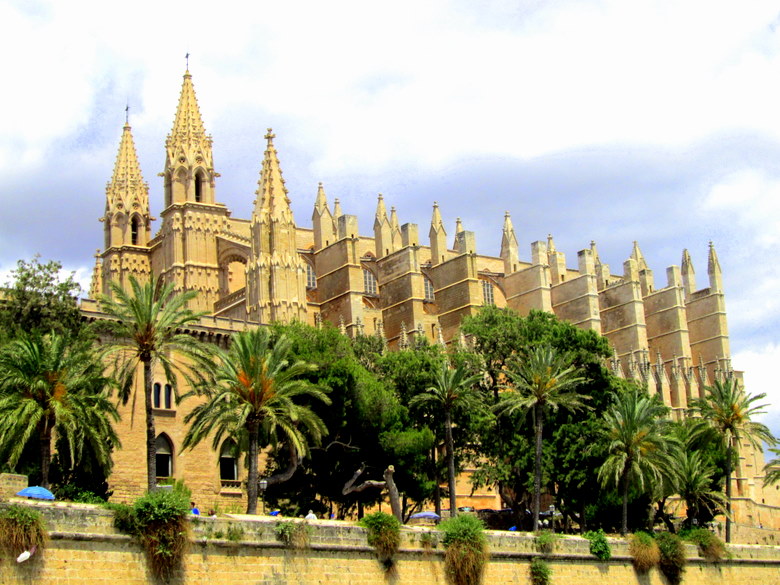
Beautiful and unusual is the historical center of the city with its medieval streets and squares, with typical Spanish courtyards with old houses that belonged to various nobles and wealthy families of the city. The seaport of Palma welcomes the most prestigious round-the-world liners every day in the summer. Opposite its long promenade, there are many seaside restaurants with the best views and Mediterranean cuisine.
